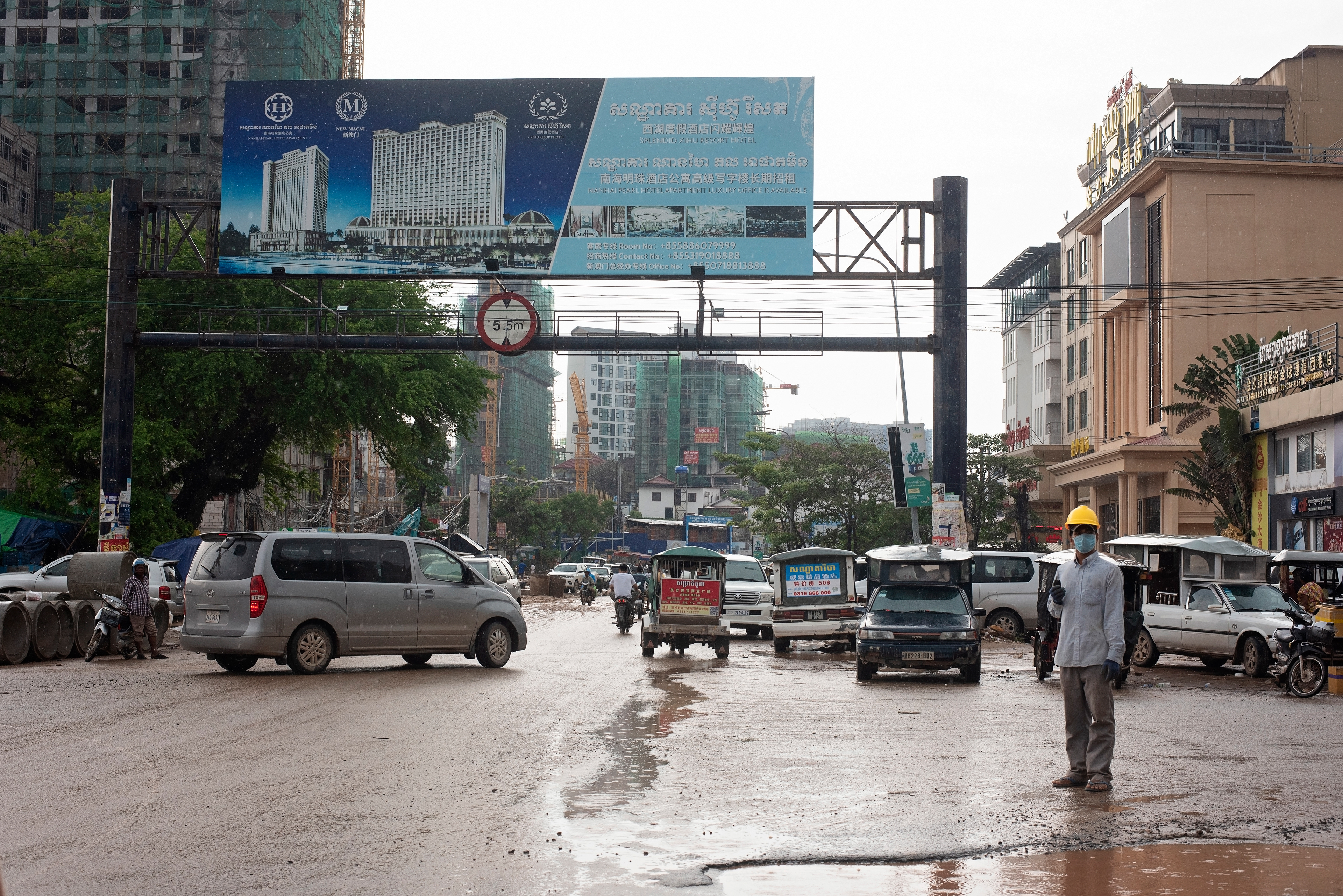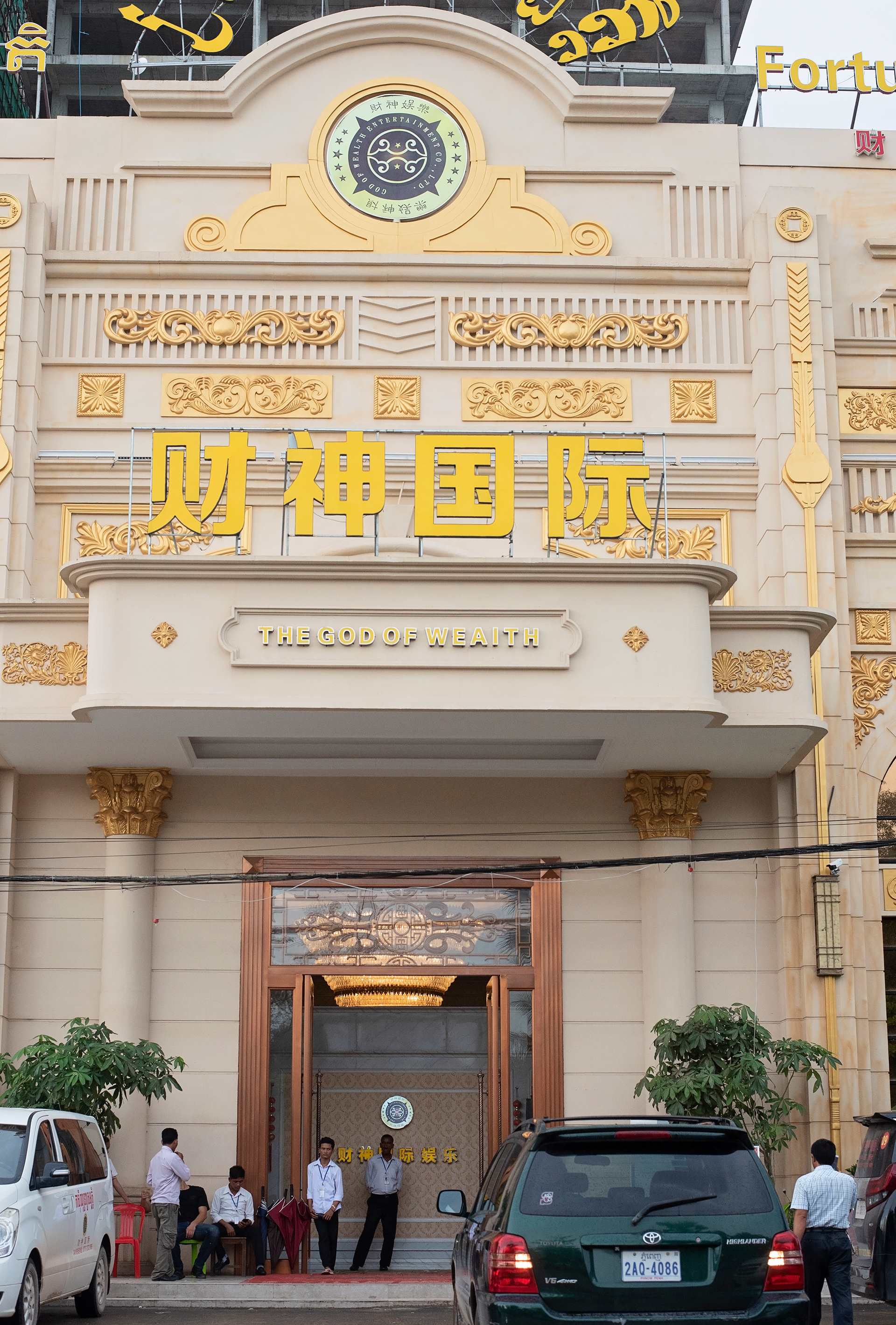Drone video by Aaron Atkins; Edited by Delia Palmisano
By Delia Palmisano
For years, the town of Sihanoukville served as a jumping off point for Cambodia’s white sand beaches and southern islands, drawing tourists from all over the world. Recently, however, the region has seen
a transformation.
a transformation.
Unparalleled development has changed its face. What was once the hustle and bustle of a coastal town has exploded into a giant construction zone and spread south to the nearby towns of Otres Beaches 1, 2 and 3. A trip that used to take four and half hours from the capital, Phnom Penh, now stretches to nearly seven, as drivers navigate roads bloated with massive vehicles bringing building supplies to
the province.
the province.
Nearby Otres 2 is the embodiment of this juxtaposition of new and old. Cows stand in the middle of roads, once quiet, but now bustle with traffic at all times of day. Remnants of the sleepy seaside beach village still exist. Meanwhile, massive construction now looms above the palapas and fishing boats. Noise, garbage, and the filth that goes along with such endeavors serve as the backdrop.




(top left) A fishing boat heads out from the beach on Otres 2; the buildings and construction from Sihanoukville loom in the distance. (top left) A high-rise hotel is being built on Otres 2. The once quiet beach, popular with locals and backpackers is increasingly loud and busy as Chinese investors are buying and building in the area. (bottom left) A local fisherman works on his boat in the water on the Gulf of Thailand. Seafood provides Cambodia with its main source of protein as well as contributing to the local economy. Fishing trips were also one of the main tourist attractions in the area, but visitor numbers have been decreasing in recent years. By Delia Palmisano; (bottom right) A birds-eye view of Otres 2 shows the stark contrast between the sea and new construction in the distance. By Aaron Atkins
Locals and visitors are dismayed by what is happening to the once beautiful beaches in Cambodia. Sovanrith Po Dustin, who was on vacation with his wife, Chanra Ying and their young son, is saddened by all the destruction that has accompanied the growth in the region. His wife agrees.
“We would like to live in a quiet place and enjoy the natural,” she said. “But they (the Chinese) came in and destroyed all the natural.” She said she hadn’t been to Otres in two years and hardly recognized the area.
Chanra Ying (right) talks with Heng Reach (left) at the hotel where Reach works on Otres 2. Ying was visiting the area from Phnom Penh with her husband and son. She says she hadn’t been to Otres in two years and hardly recognized it because of all the construction. By Delia Palmisano
The Ministry of Finance states the province now has over 163 casinos and according to the Phonm Penh Post, Chinese nationals now own more than 90% of businesses in Sihanoukville. This growth has been an ever-growing point of contention in the region. Concerns over mounting pollution and increased gang violence plague the city.
Safety for construction workers has also been under scrutinty as of late. The work is generally low-paid, unregulated and dangerous. In June a seven-story building collapsed, killing at least 18 people, according to the BBC.
As you venture out of Otres 2 and into Sihanoukville, the din of the construction grows louder and the juxtaposition starker. Gaudy casinos emblazoned with words like “The God of Wealth,” rise up above dirt roads covered in trash. Signs at all the casinos state that no Cambodians will be allowed entry. Gambling, though legal for non-citizens, remains illegal for Cambodians.
The roads in and out of Sihanoukville are a massive construction zone. Video by Russell James; Edited by Delia Palmisano


(Top left) A construction worker stands in the street in downtown Sihanoukville under a sign written in Chinese, English and Cambodian advertising a new casino. The work is generally low paid, dangerous and often unregulated. (top right) Chinese employees sit outside a casino emblazoned with the words, “The God of Wealth.” Gambling, though legal for non-citizens, remains illegal for Cambodians. The casinos have signs indicating that Cambodians are not allowed admittance. (bottom) Construction trash and other waste sits on the street in Sihanoukville. According to one local, the amount of garbage has increased exponentially in the last two years. By Delia Palmisano
Heng Reach, who has worked in the area for almost five years, worries about what the influx of construction will do to the tourist industry– his livelihood.
“The local people, the businesses on the beach, like the local massages, they’ve lost a lot of business,” he said. He’s noticed a marked decrease in tourists to the area in the past three years; meanwhile many locals are packing up and moving out of Sihanoukville and Otres Beach.
The sun sets over the Gulf of Thailand off Otres 2. From this view, it’s easy to forget the construction that moves closer every day from Sihanoukville. By Delia Palmisano
Chanra Ying is upset that none of the money from the development is being used to help Cambodia. “What I’m really don’t like is that they (the Chinese) aren’t invested in Cambodia at all,” she said.
With all the newly Chinese-owned businesses in the province, she doesn't see any locals being helped by the new growth. She thinks the development is all about money, business and greed and worries that the trend will expand to other parts of the country.
“For me, I just need enough to be satisfied," she said. "I don’t really wish to be rich. I wish to be happy.”